
How to Use ESP32-WROOM-32UE: Examples, Pinouts, and Specs
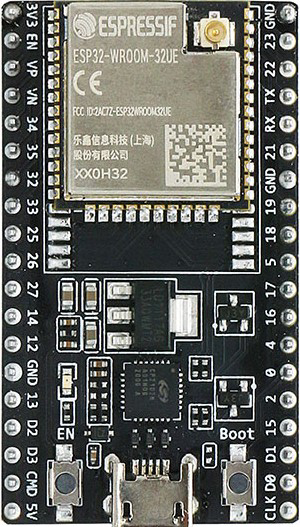
 Design with ESP32-WROOM-32UE in Cirkit Designer
Design with ESP32-WROOM-32UE in Cirkit DesignerIntroduction
The ESP32-WROOM-32UE is a high-performance Wi-Fi and Bluetooth microcontroller module manufactured by Espressif Systems. It features dual-core processing, making it an excellent choice for Internet of Things (IoT) applications, embedded systems, and wireless communication projects. This module is designed for robust performance, low power consumption, and seamless integration into a wide range of devices.
Explore Projects Built with ESP32-WROOM-32UE
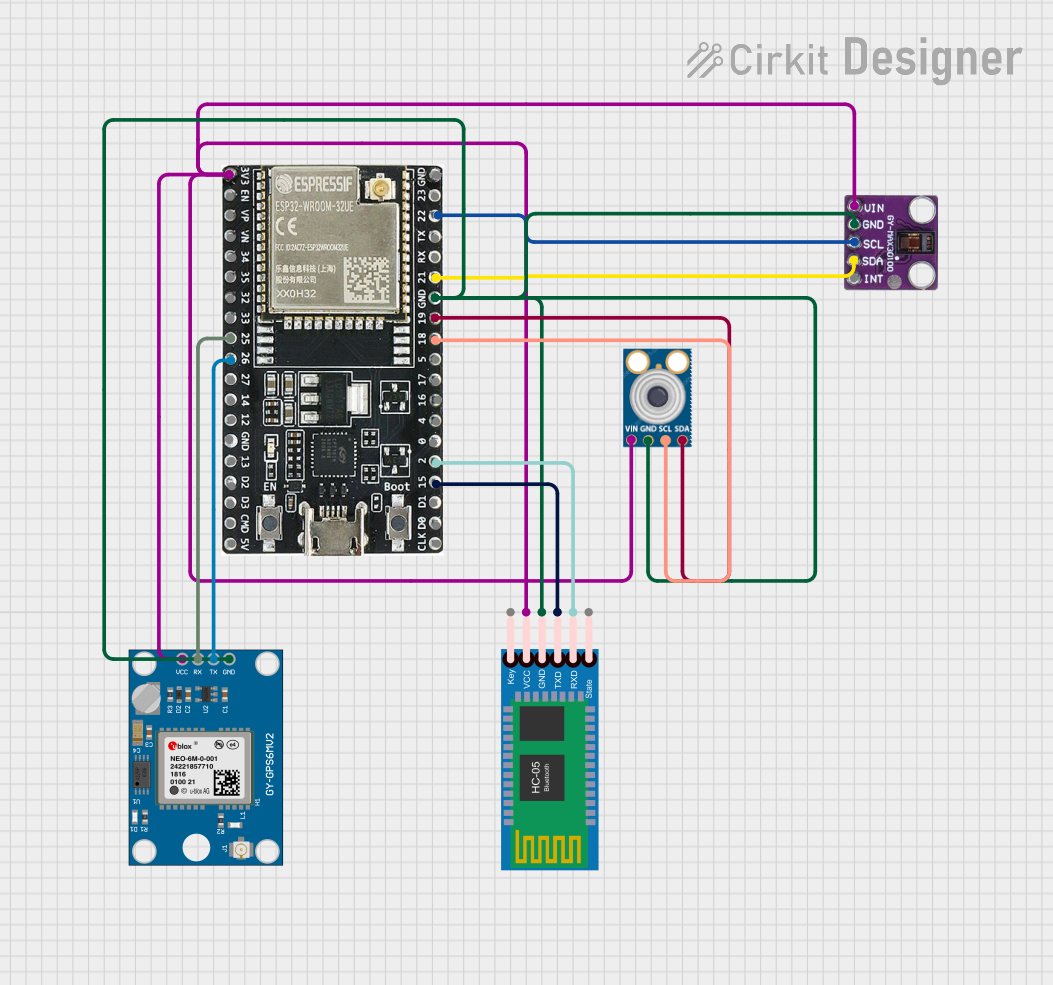
 Open Project in Cirkit Designer
Open Project in Cirkit Designer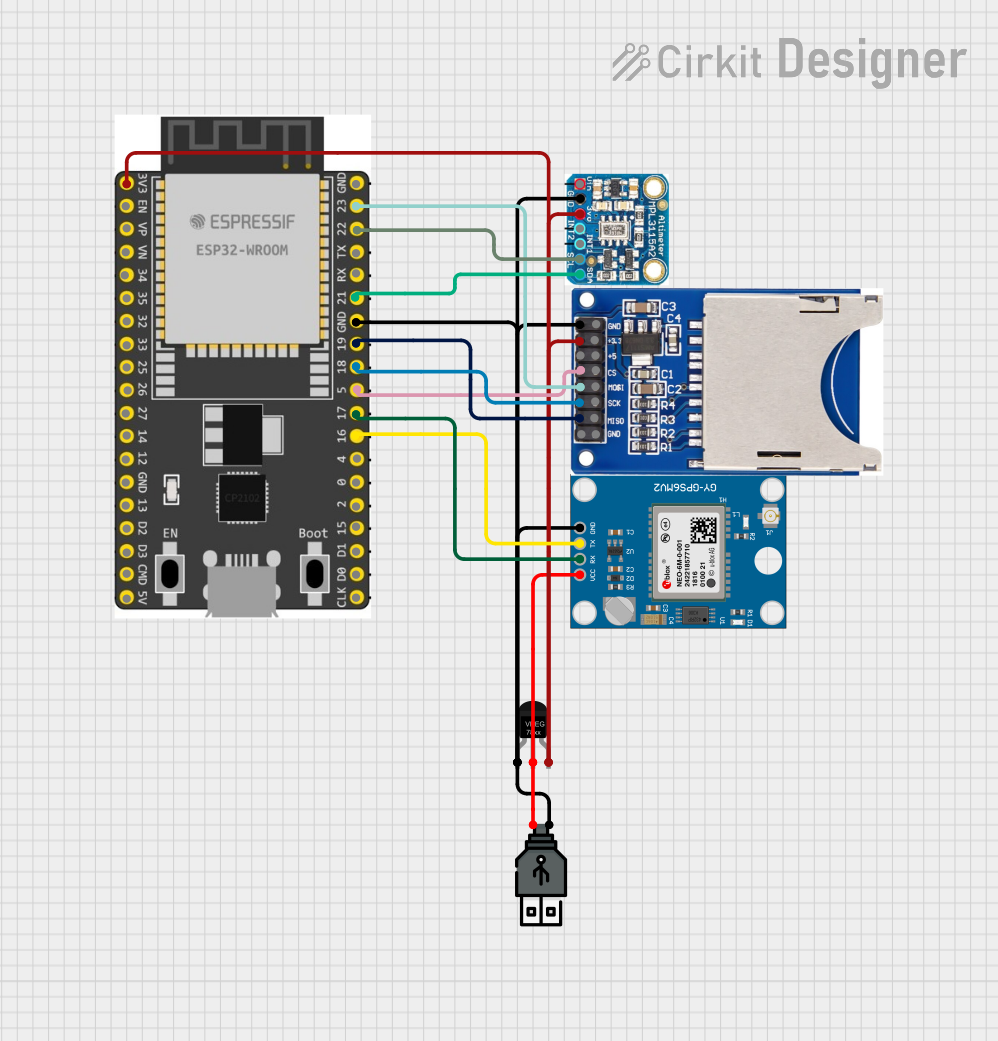
 Open Project in Cirkit Designer
Open Project in Cirkit Designer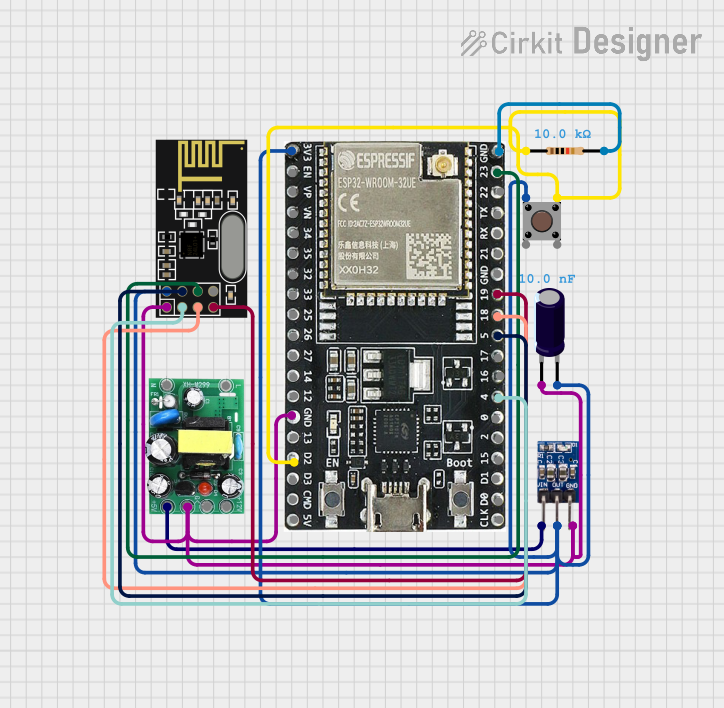
 Open Project in Cirkit Designer
Open Project in Cirkit Designer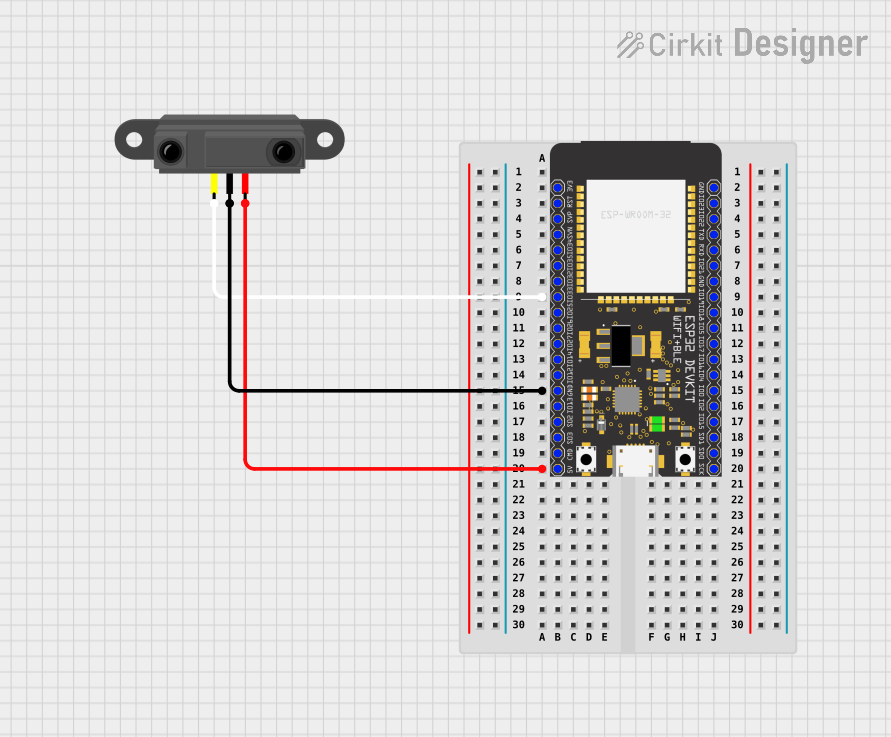
 Open Project in Cirkit Designer
Open Project in Cirkit DesignerExplore Projects Built with ESP32-WROOM-32UE

 Open Project in Cirkit Designer
Open Project in Cirkit Designer
 Open Project in Cirkit Designer
Open Project in Cirkit Designer
 Open Project in Cirkit Designer
Open Project in Cirkit Designer
 Open Project in Cirkit Designer
Open Project in Cirkit DesignerCommon Applications and Use Cases
- IoT devices and smart home automation
- Wireless sensor networks
- Industrial automation and control systems
- Wearable electronics
- Prototyping and development of Bluetooth and Wi-Fi-enabled devices
- Audio streaming and voice recognition systems
Technical Specifications
The ESP32-WROOM-32UE is built for versatility and performance. Below are its key technical details:
Key Technical Details
| Parameter | Specification |
|---|---|
| Microcontroller | ESP32-D0WDQ6 (dual-core Xtensa® 32-bit LX6 processor) |
| Clock Speed | Up to 240 MHz |
| Flash Memory | 4 MB (external SPI flash) |
| RAM | 520 KB SRAM |
| Wireless Connectivity | Wi-Fi 802.11 b/g/n (2.4 GHz), Bluetooth v4.2 BR/EDR and BLE |
| Operating Voltage | 3.0V to 3.6V |
| Power Consumption | Ultra-low power consumption in deep sleep mode (as low as 10 µA) |
| Antenna | External IPEX antenna connector |
| GPIO Pins | 36 GPIO pins with multiple functions |
| Interfaces | UART, SPI, I2C, I2S, PWM, ADC, DAC |
| ADC Resolution | 12-bit, up to 18 channels |
| Operating Temperature | -40°C to +85°C |
| Dimensions | 18 mm x 25.5 mm x 3.1 mm |
| Certifications | FCC, CE, IC, MIC (Japan), KCC (Korea), and SRRC (China) |
Pin Configuration and Descriptions
The ESP32-WROOM-32UE module has 38 pins. Below is a summary of the pin configuration:
| Pin Number | Name | Function |
|---|---|---|
| 1 | GND | Ground |
| 2 | 3V3 | Power supply (3.3V) |
| 3 | EN | Enable pin (active high) |
| 4 | IO0 | GPIO0, used for boot mode selection |
| 5 | IO2 | GPIO2, supports ADC, PWM, and other functions |
| 6 | IO4 | GPIO4, supports ADC, PWM, and other functions |
| 7 | IO5 | GPIO5, supports ADC, PWM, and other functions |
| 8 | IO12 | GPIO12, supports ADC, PWM, and other functions |
| 9 | IO13 | GPIO13, supports ADC, PWM, and other functions |
| 10 | IO14 | GPIO14, supports ADC, PWM, and other functions |
| 11 | IO15 | GPIO15, supports ADC, PWM, and other functions |
| 12 | IO16 | GPIO16, supports ADC, PWM, and other functions |
| 13 | IO17 | GPIO17, supports ADC, PWM, and other functions |
| 14 | IO18 | GPIO18, supports SPI, PWM, and other functions |
| 15 | IO19 | GPIO19, supports SPI, PWM, and other functions |
| 16 | IO21 | GPIO21, supports I2C, PWM, and other functions |
| 17 | IO22 | GPIO22, supports I2C, PWM, and other functions |
| 18 | IO23 | GPIO23, supports SPI, PWM, and other functions |
| 19 | IO25 | GPIO25, supports ADC, DAC, and other functions |
| 20 | IO26 | GPIO26, supports ADC, DAC, and other functions |
| 21 | IO27 | GPIO27, supports ADC, PWM, and other functions |
| 22 | IO32 | GPIO32, supports ADC, PWM, and other functions |
| 23 | IO33 | GPIO33, supports ADC, PWM, and other functions |
| 24 | IO34 | GPIO34, input-only GPIO, supports ADC |
| 25 | IO35 | GPIO35, input-only GPIO, supports ADC |
| 26 | IO36 | GPIO36, input-only GPIO, supports ADC |
| 27 | IO39 | GPIO39, input-only GPIO, supports ADC |
Usage Instructions
The ESP32-WROOM-32UE is a versatile module that can be used in a variety of applications. Below are the steps and best practices for using it in a circuit:
How to Use the Component in a Circuit
- Power Supply: Connect the 3V3 pin to a 3.3V power source and GND to ground. Ensure the power supply is stable and capable of providing sufficient current (at least 500 mA).
- Boot Mode: To upload code, connect GPIO0 to GND during reset to enter bootloader mode.
- Programming: Use a USB-to-serial adapter to connect the module to your computer. The UART pins (TXD0 and RXD0) are used for communication.
- Antenna: Connect an external IPEX antenna to the antenna connector for optimal wireless performance.
- Peripherals: Use the GPIO pins to interface with sensors, actuators, and other peripherals. Configure the pins in your code as needed (e.g., input, output, ADC, PWM).
Important Considerations and Best Practices
- Voltage Levels: Ensure all GPIO pins operate at 3.3V logic levels. Using higher voltages may damage the module.
- Antenna Placement: Place the external antenna in a location free from obstructions for optimal signal strength.
- Deep Sleep Mode: Use deep sleep mode to minimize power consumption in battery-powered applications.
- Decoupling Capacitors: Add decoupling capacitors (e.g., 0.1 µF) near the power pins to reduce noise and improve stability.
Example Code for Arduino UNO
The ESP32-WROOM-32UE can be programmed using the Arduino IDE. Below is an example of how to connect the module to Wi-Fi:
#include <WiFi.h> // Include the WiFi library for ESP32
const char* ssid = "Your_SSID"; // Replace with your Wi-Fi network name
const char* password = "Your_Password"; // Replace with your Wi-Fi password
void setup() {
Serial.begin(115200); // Initialize serial communication at 115200 baud
delay(1000); // Wait for a second to stabilize
Serial.println("Connecting to Wi-Fi...");
WiFi.begin(ssid, password); // Start Wi-Fi connection
while (WiFi.status() != WL_CONNECTED) {
delay(500); // Wait for connection
Serial.print(".");
}
Serial.println("\nWi-Fi connected!");
Serial.print("IP Address: ");
Serial.println(WiFi.localIP()); // Print the assigned IP address
}
void loop() {
// Add your main code here
}
Troubleshooting and FAQs
Common Issues and Solutions
Wi-Fi Connection Fails:
- Ensure the SSID and password are correct.
- Check if the router is within range and functioning properly.
- Verify that the antenna is connected securely.
Module Not Detected by Computer:
- Confirm that the USB-to-serial adapter is working and drivers are installed.
- Check the wiring between the adapter and the module.
- Ensure GPIO0 is connected to GND during reset for bootloader mode.
Overheating:
- Verify that the power supply voltage does not exceed 3.6V.
- Ensure proper ventilation around the module.
Unstable Operation:
- Add decoupling capacitors near the power pins.
- Check for loose connections or poor soldering.
FAQs
Q: Can the ESP32-WROOM-32UE operate on 5V?
A: No, the module operates at 3.3V. Using 5V may damage the module.Q: How do I reset the module?
A: Pull the EN pin low momentarily to reset the module.Q: Can I use the module without an external antenna?
A: No, the ESP32-WROOM-32UE requires an external IPEX antenna for wireless communication.Q: What is the maximum range of the Wi-Fi connection?
A: The range depends on the antenna and environment but typically extends up to 100 meters in open space.
This concludes the documentation for the ESP32